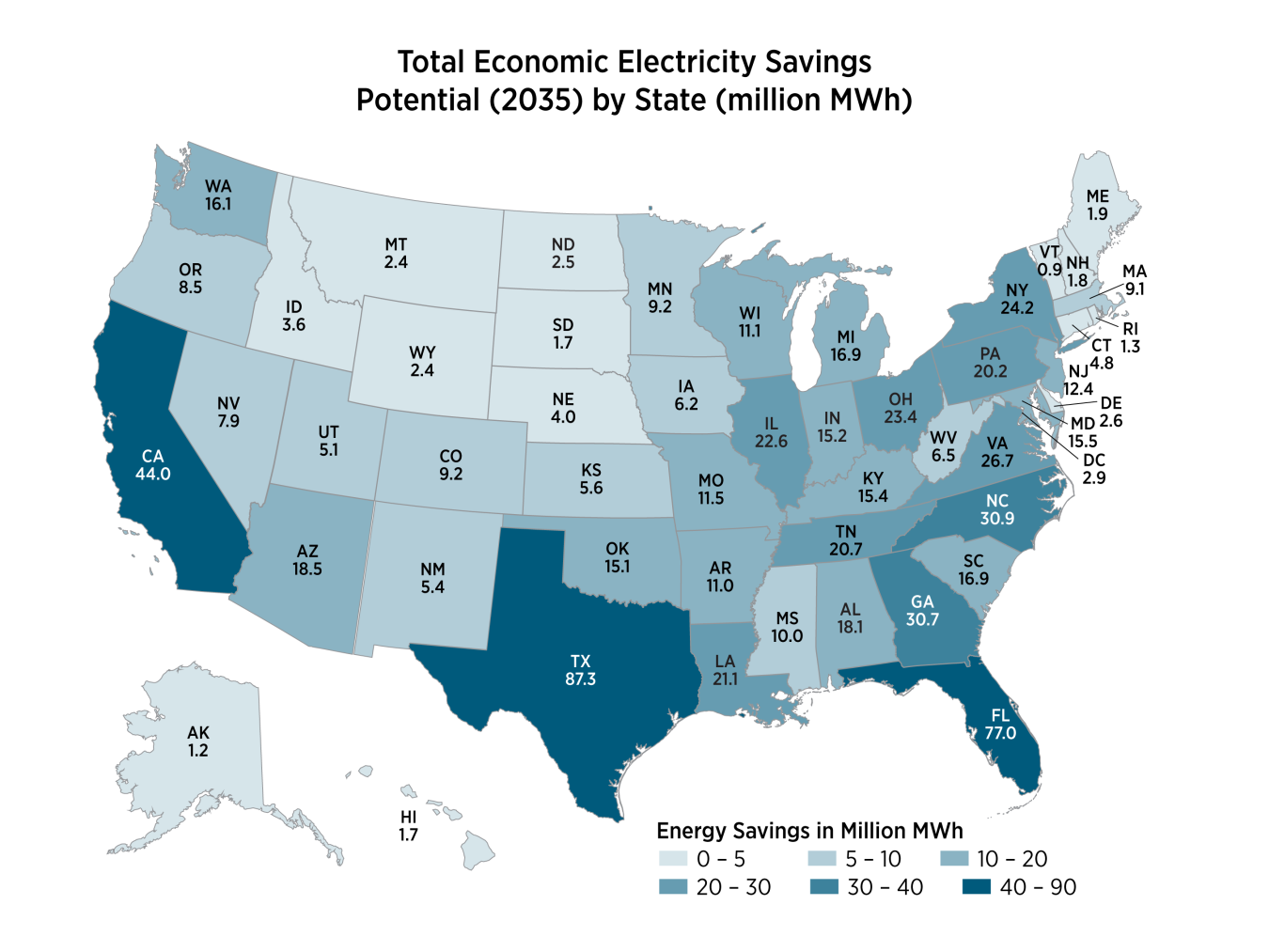
- Source: EPRI, 2017. State-Level Electric Energy Efficiency Potential Estimates
- Total electricity savings: 741 million MWh
- State-level electricity savings: 0.9 million MWh to 87.3 million MWh per state
- Total electricity savings as a percent of projected adjusted baseline sales: 16%
- State-level electricity savings as a percent of projected adjusted baseline sales: 12% to 21% per state
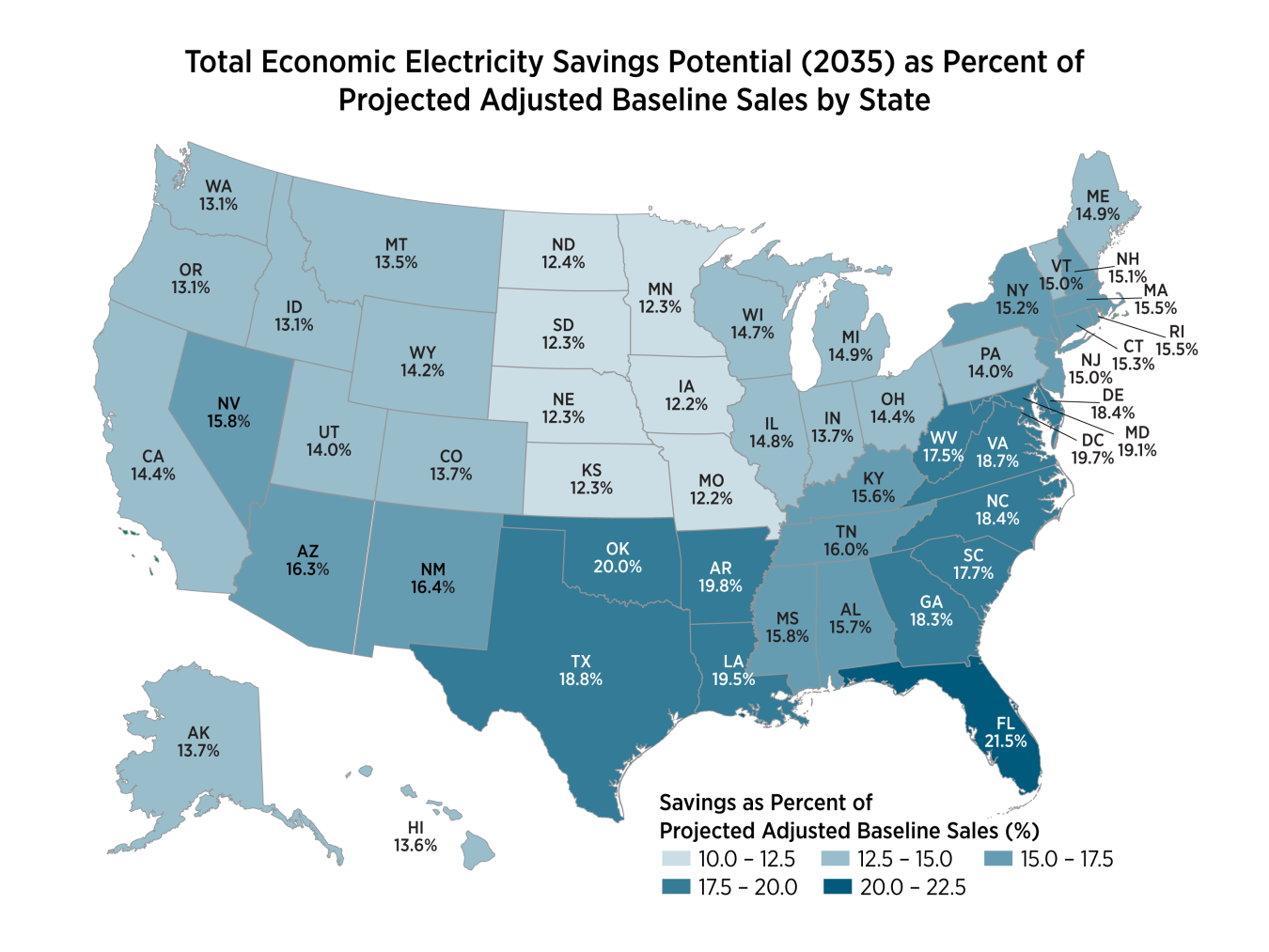
- Source: EPRI, 2017. State-Level Electric Energy Efficiency Potential Estimates
- Total electricity savings: 741 million MWh
- State-level electricity savings: 0.9 million MWh to 87.3 million MWh per state
- Total electricity savings as a percent of projected adjusted baseline sales: 16%
- State-level electricity savings as a percent of projected adjusted baseline sales: 12% to 21% per state
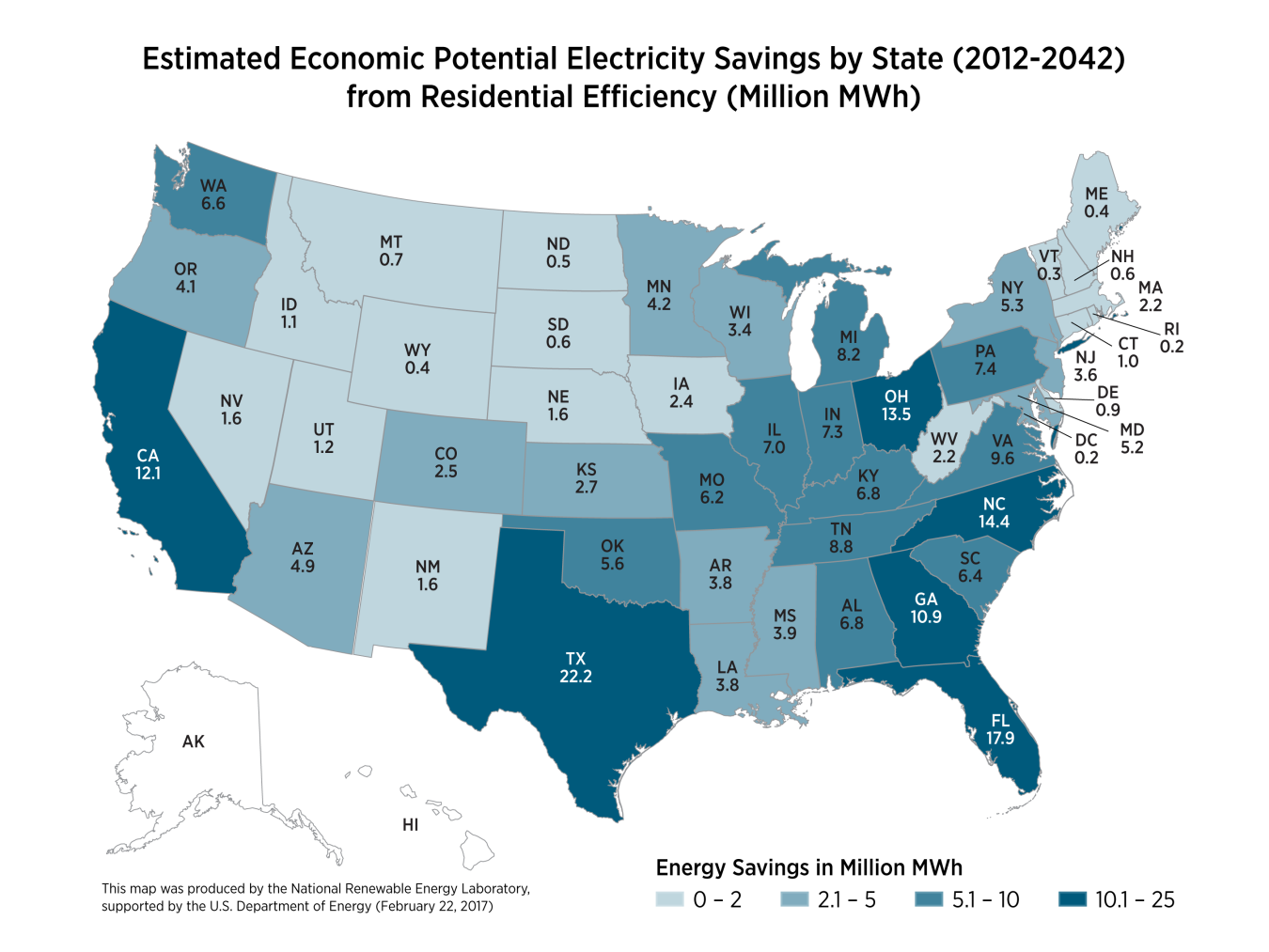
- Source: NREL, 2017. Electric End-Use Energy Efficiency Potential in the U.S. Single-Family Housing Stock
- Total electricity savings: 245 million MWh
- State-level electricity savings: 0.2 to 22.2 million MWh per state
- Total additional energy** savings: 4,200 trillion Btu (not pictured)
- State-level additional energy** savings: 2 to 273 trillion Btu per state (not pictured)
- *Includes all upgrades with net present value greater than 0.
- **Includes ancillary natural gas, propane, and fuel oil savings from cost-effective energy efficiency packages
- Detailed State Fact Sheets on EE Potential in Single Family Homes: NREL’s new research tool, ResStock, has identified $49 billion in annual cost-effective residential energy savings potential and the top 10 savings opportunities in 48 states.
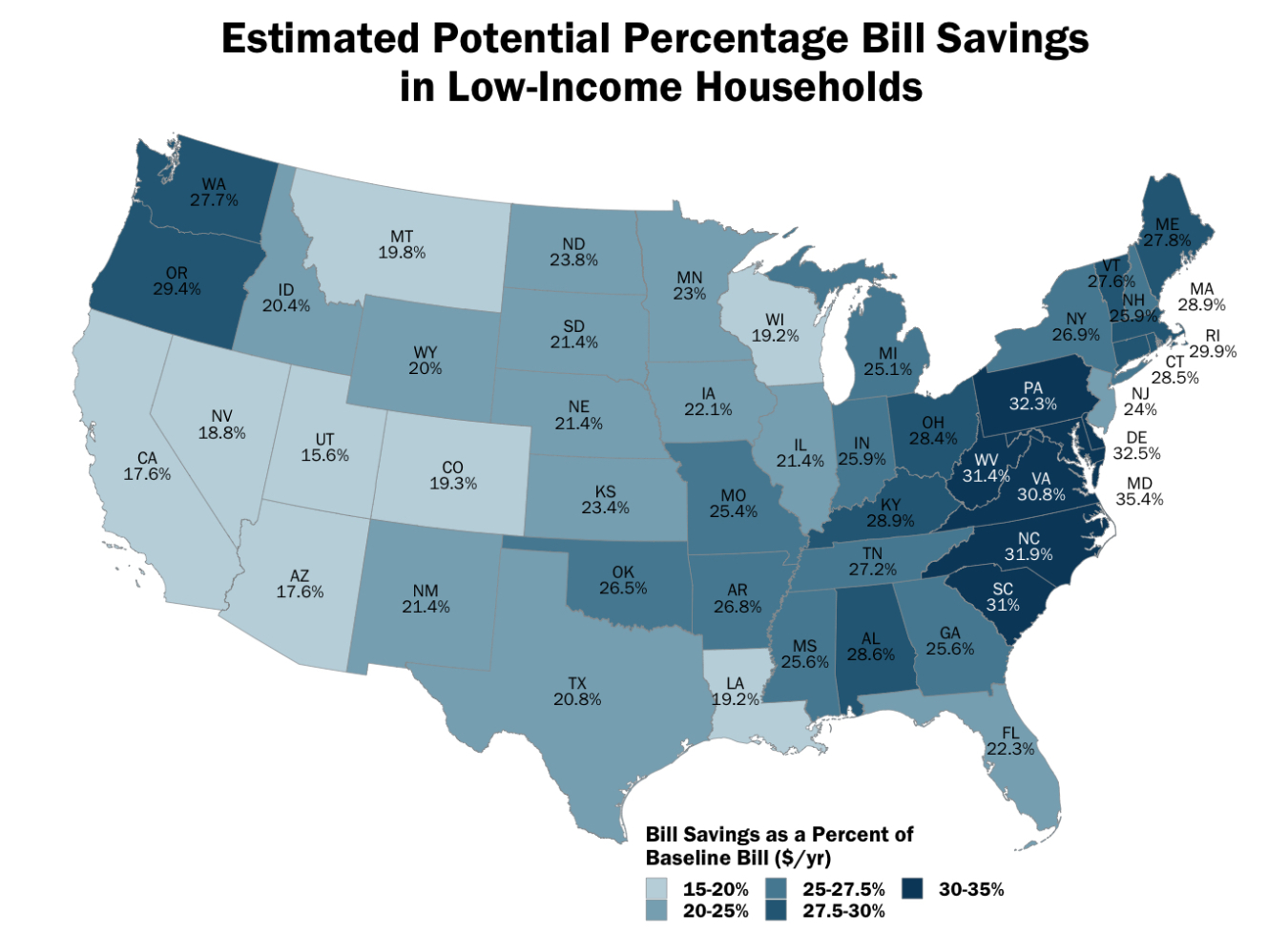

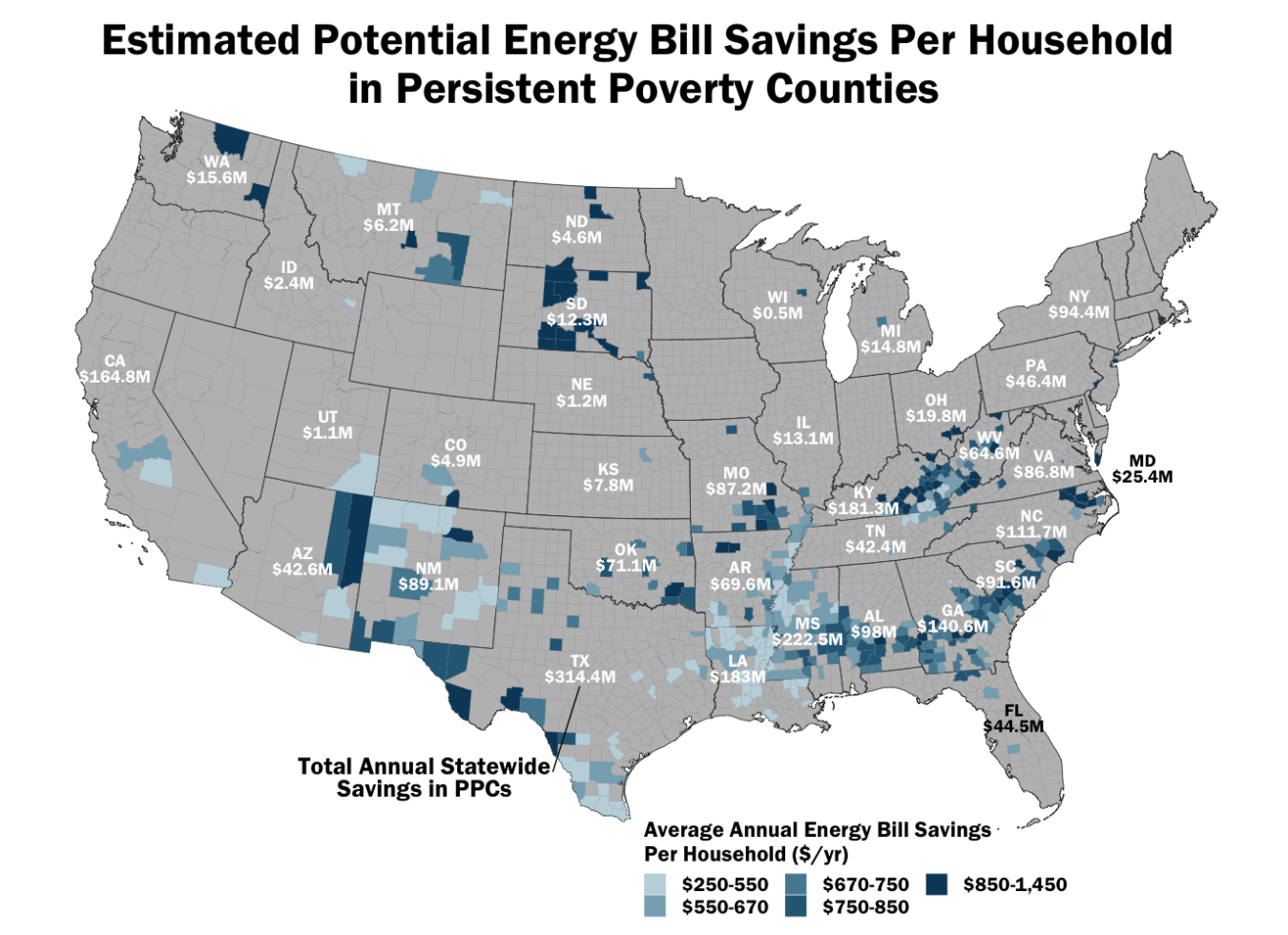
- Source: Wilson et al., 2019. Evaluating energy efficiency potential in low-income households: A flexible and granular approach
- Total energy savings: 77 TWh per year electricity savings and 352 TBtu per year on-site fuel savings for households with 200% of the Federal Poverty Level.
- Cost savings: $13 billion in annual savings for low-income households.
- State-level energy bill savings for low-income households: range from 17.6% to 32.3%.
- Cost-effective electricity savings: up to 30% of low-income households electricity use.
- Bill savings in all households in Persistent Poverty Counties: $2.4 billion.
- Additional estimations of cost effective energy savings are identified by income measurements. Example: $16 billion in annual savings potential for households under 80% of Area Median Income (not shown).
- Detailed factsheet on Low-Income Household Energy Burden. Low income burden varies among stages, but efficiency can help in all of them.
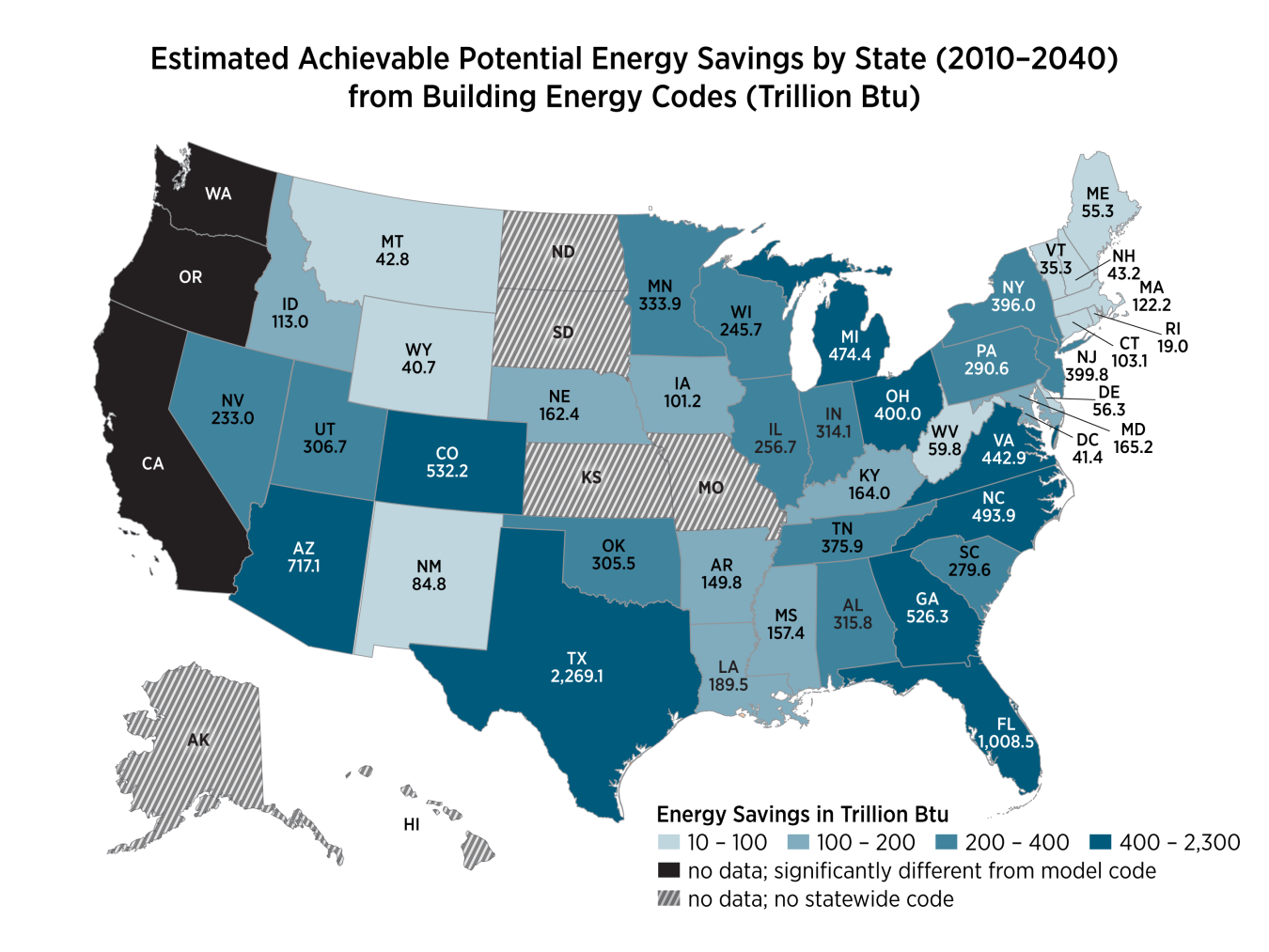
- Source: PNNL, 2016. Impacts of Model Building Energy Codes
- Total energy savings: 12,824 trillion Btu (2040) / 6,760 trillion Btu (2030) (not pictured)
- State-level energy savings: 19 to 2,269 trillion Btu per state in 2040
- Total cost savings: $125.93 billion (2040) / $68.72 billion (2030)
- State-level cost savings: $26 million to $21.87 billion per state in 2040
- Total CO2 reduction: 840.94 million metric tons (MMT) (2040) / 443.30 MMT (2030)
- State-level CO2 reduction: 1.27 to 149.33 MMT in 2040
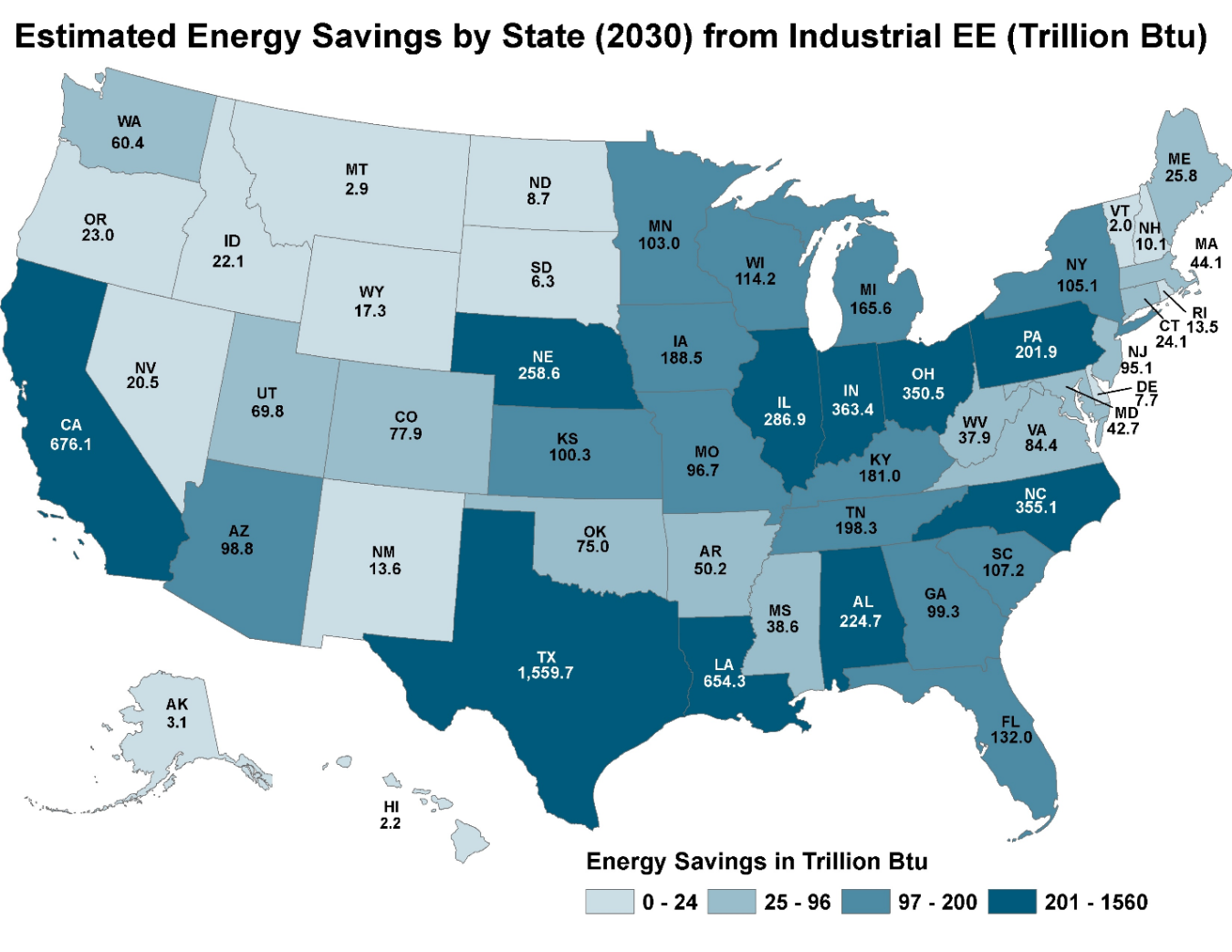
- Source: U.S. DOE, 2016. Industrial Energy Efficiency Potential Analysis
- Total energy savings: 7,500 trillion Btu
- State-level energy savings: 2.0 to 1,559.7 trillion Btu per state
- Total electricity savings: 435.8 million MWh (not pictured)
- State-level electricity savings: 0.1 to 92.7 million MWh per state
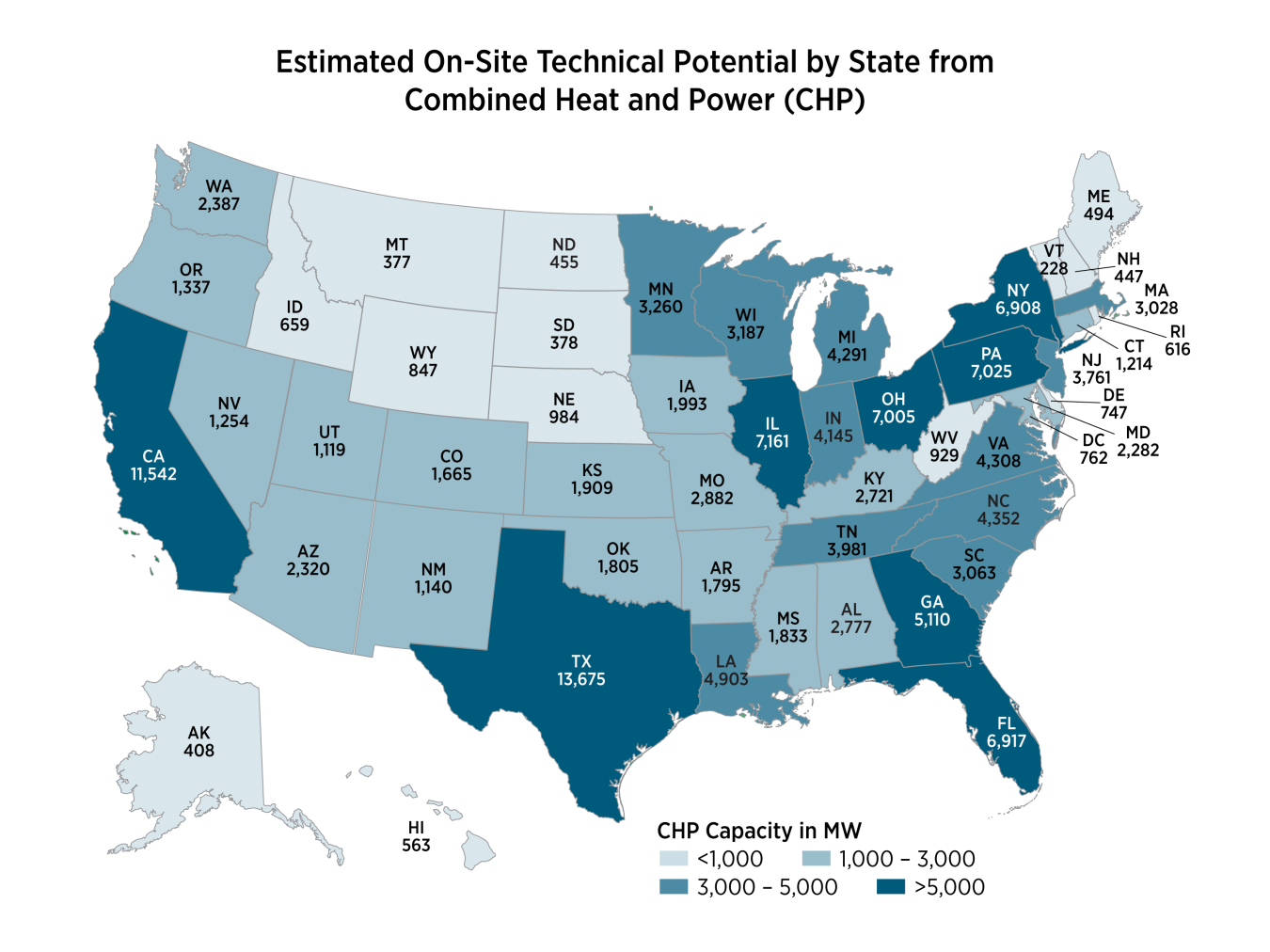
- Source: U.S. DOE, 2016. Combined Heat and Power (CHP) Technical Potential in the United States
- Total electricity potential: 148,936 MW at 291,838 sites
- State-level electricity potential: 400 to 14,000 MW per state
